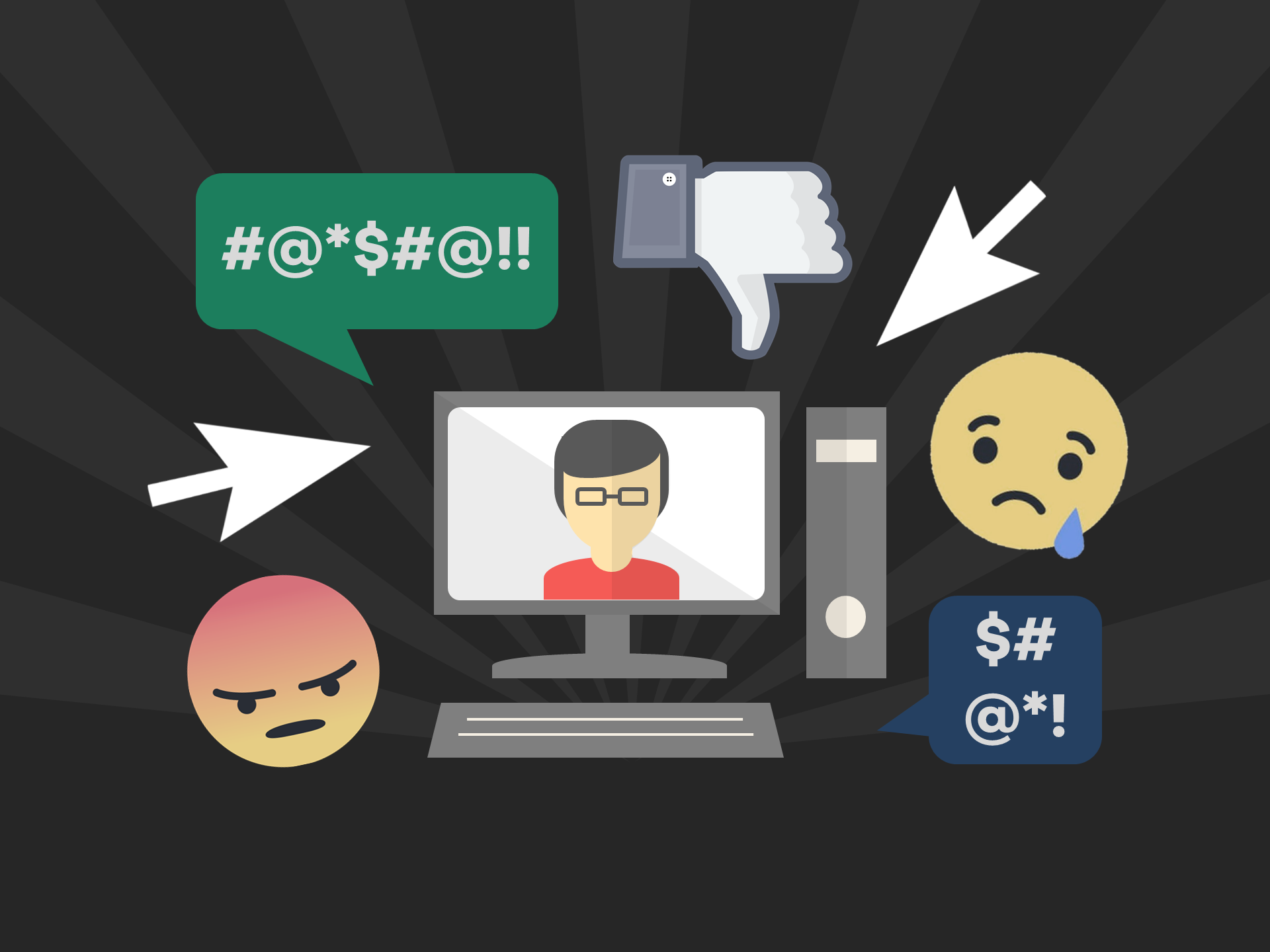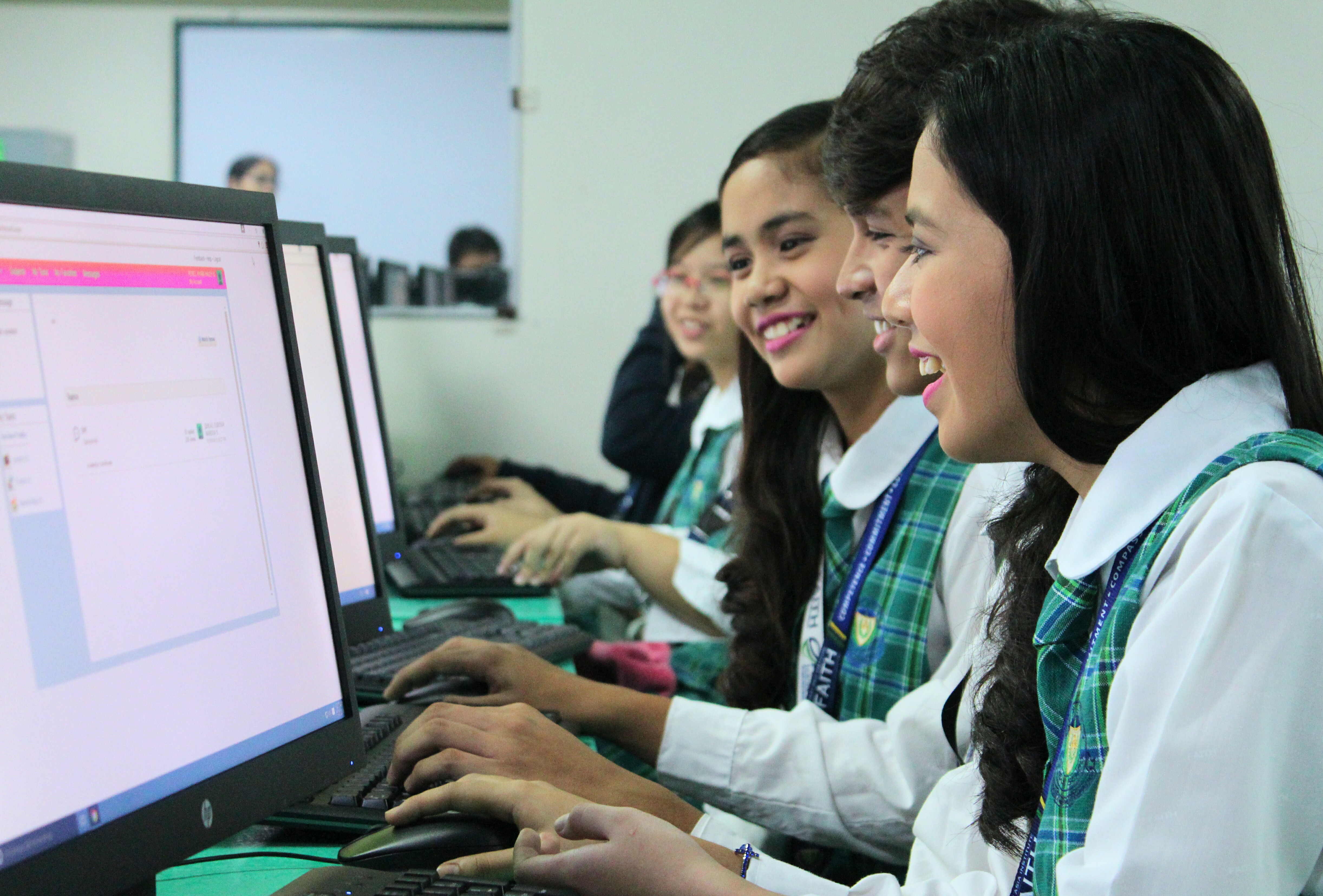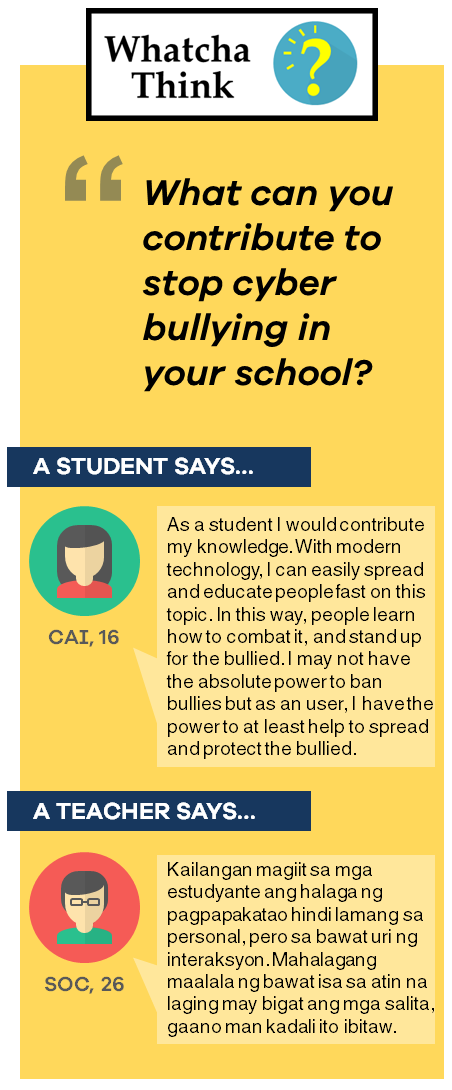Cyber bullying:
What schools can do to stop it

Cyber bullying, as defined by the U.S.-based Cyberbullying Research Center, is the “willful and repeated harm inflicted through the use of computers, cell phones, and other electronic devices”. In recent times, the most common forms of cyber bullying are comments and private messages on social media networks that threaten or harass a person.
As with other types of bullying, cyber bullying leaves scars. Though not physical in nature, the emotional and mental trauma it causes in children could persist even through their adulthood.
Is cyber space a safe place for children?
The NBS-VAC found that 5 out of 10 Filipino youth have experienced cyber bullying. However, a 2015 survey by non-government children’s rights organization, Stairway Foundation Inc, revealed a higher rate of cyber bullying among the youth, with 80% of teenagers aged 13 to 16 and 60% of children aged 7 to 12 enduring this kind of abuse.
These rates are alarming. Bullying has always been a prevalent concern among the youth, but the advent of technology, particularly the internet, smartphones and social media networks, have made it easier for children to fall victim to cyber violence.
Social networks implement age restrictions in an attempt to shield children from harm. Facebook, for example, does not allow children younger than 13 years old to create an account. YouTube also has age-restricted content that can only be viewed by those aged 18 and above.
But one only has to go to any social media platform to realize that children of all ages have been accessing social networks regardless of age restrictions.
It remains the duty of parents, schools, and legal institutions to protect the youth against cyber violence.

The government’s role in cyber safety
In the Philippines, the Cybercrime Prevention Act of 2012 is the major safeguard of Filipinos against online harassment. It criminalizes several cyber-related offenses, including illegal access (hacking), data interference, cybersquatting, fraud, cybersex, spam, child pornography, and libel, among other things. What it does not contain are clauses that specifically address cyber bullying.
On September 2013, Republic Act No. 10627 entitled “An Act Requiring All Elementary And Secondary Schools To Adopt Policies To Prevent And Address The Acts Of Bullying In Their Institutions” was signed into law. Referred to as the Anti-Bullying Act of 2013, the law enumerated the following types of bullying:
- Any unwanted physical contact between the bully and the victim (ie. punching, pushing, use of weapons, etc.);
- Any act that causes damage to a victim’s psyche and/or emotional well-being;
- Any slanderous statement that causes the victim undue emotional distress (ie. foul language, profanity, name-calling, etc.); and
- Cyber bullying.
The bill leaves it up to schools to take the necessary disciplinary actions for perpetrators, provided that a rehabilitation program is included.
After the institutionalization of the Anti-Bullying Act, the Department of Education (DepEd) has further improved on its Child Protection Policy (CPP) by mandating the creation of Child Protection Committees in school divisions.
The most recent move to penalize cyber bullying happened on May 2015, when Camarines Sur Rep. Rolando Andaya authored the Anti-Cyber Bullying Act of 5718. As opposed to the school-specific Anti-Bullying Act of 2013, this bill would be applicable to all Filipinos. Unfortunately, the 16th Congress failed to pass the bill before it adjourned.
Education as key to preventing cyberbullying
Children spend a huge amount of their time in school, so it is only proper that schools take a more proactive stand in the fight against cyber violence.
The first step for schools is to recognize cyber bullying as a problem and take it seriously. The survey from Stairway Foundation Inc. found that only 5% of pre-pubescent children and 1% of teens would confide their cyber bullying experiences to their teachers, with 15% of pre-pubescent children and 22% of teens preferring not to open up at all.

To address these numbers, schools can take the following actions:
1. Educate students and staff about cyber bullying.
Encourage guidance counselors to give seminars that talk about the emotional and mental effects of cyber bullying. Train teachers to recognize signs of bullying or being bullied in their own classrooms.
2. Launch engaging anti-cyber bullying programs that would involve the whole school.
In 2016, iACADEMY unveiled an Anti-Bullying Exhibit named “Armed with Art”, which featured art works of students that shed light to their experiences with bullying. Schools can likewise create projects that students and staff can participate in that can bring cyber bullying to the forefront.
3. Implement school-wide policies against cyber bullying.
Equally as important as determining and helping students who are victims of cyber violence is being able to teach students not to be culprits of cyber bullying.
4. Build and nurture a safe environment.
Create an atmosphere of tolerance and respect in school. Let students know that they have people to approach and talk to should they experience bullying of any kind.
Starting the conversation at home
Even more significant than the role of schools is the role of parents in ensuring that their children are not victims or perpetrators of cyber bullying.
The biggest step that parents can take is to maintain an open line of communication with their children. The cyber space can make children secretive, but when children trust their parents, they would have no problems opening up when bad situations arise. Reinforce the importance of treating people with respect. At the end of the day, children bring what they learn at home anywhere they go.
For further reading:
A profile of internet users in the Philippines
Cyber-bullying via social media seen as crime-Inquirer
CYBER THREAT | 43% of Filipino children experience cyber violence-study
Cyberbullying not a ‘tech’ issue: Pt. 1
Cyberbullying not a ‘tech’ issue: Pt. 2
How to take action if you are harassed online




